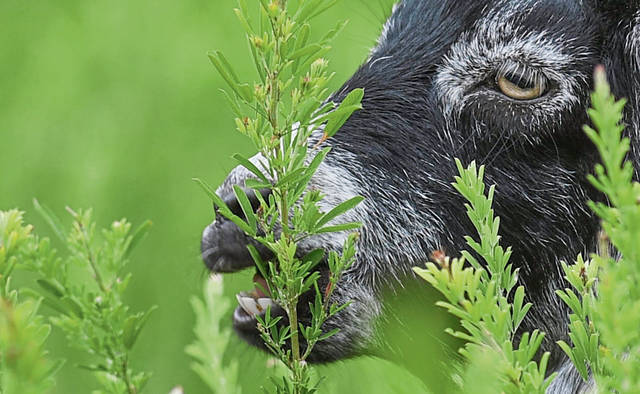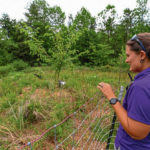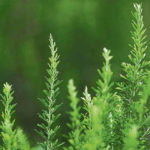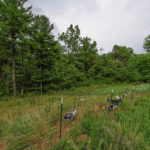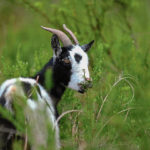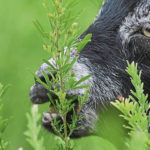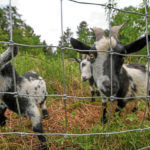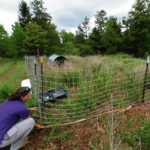Goats could be a key factor in ridding Beaver Run Reservoir property of an invasive weed that is hindering tree growth around the drinking water source.
Municipal Authority of Westmoreland County officials, with the help of a Saint Vincent College student and professor, are studying how goats react to the weed, known as lespedeza, and if they would be a good solution to reduce or eliminate its hold on the property. Water source supervisor Laura Blood said she hopes to increase the tree cover from less than 50% to at least 65% on the watershed.
“We know we’re not going to be able to get rid of all the lespedeza,” she said. “If we can just give an advantage to the tree seedlings for the first couple years.”
Six pygmy goats took up residence at the Washington Township side of the property in early July. They are munching on lespedeza in a fenced-in area with shelter and water to help researchers learn how they interact with the thigh-high weed.
“It grows like a carpet” and suppresses tree growth, said Nicholas Kerr, authority forester.
The pilot program involves three tracts of land that will serve different purposes: one will have trees planted without goats, the second will be where the goats work and the third will act as a control site.
Ian Tracey, a biology student minoring in history and operational excellence at the Unity college, and his professor, James Kellam, took initial samples from all three spots last month to determine the type of plants that exist there and the height of the lespedeza. They also counted the number of stems of the weed to determine its density, Tracey said.
“They wanted to have some pre-goat measurements,” Blood said.
Cameras near the properties will help researchers keep an eye on the goats and how tall the lespedeza grows.
Researchers hope to find a low-cost way to eliminate the weed. There are four to five problematic areas at the reservoir totaling about 30 acres, Blood and Kerr said. MAWC initially sprayed the lespedeza, but that isn’t a long-term solution.
“It’s not a watershed-wide issue; it’s more isolated pockets,” Kerr said. “It’s kind of new to us. We are trying to think outside of the box.”
The water quality in the reservoir is good, but Kerr said there is a direct correlation between the health of a watershed and water quality. Trees help shade tributaries, which lowers water temperature and controls algae growth. As a result, authority filters don’t have to work as hard to clean the water, he said.
The authority is paying $15 per goat per day to Nuisance Wildlife Solutions in North Huntingdon, in addition to renting the fence. Goats eat brush and weeds as browsers, rather than grazers. Those types of plants make up about 60% of a goat’s diet, according to the American Institute for Goat Research.
The goats will be working until all of the lespedeza in their area is gone, but Blood said they aren’t sure how long that will take. Once they’re finished, the dirty work will begin. Tracey said he plans to pick up samples of the animals’ feces to see if their digestive tracts deactivate the lespedeza seeds.
He and Kellam will examine the plants left behind and compare that with their initial findings.







